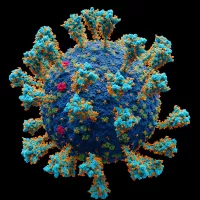Venice is a city in northeastern Italy, the capital of the Veneto region, built on 118 islands within the Venetian Lagoon. These islands are connected by canals and 438 bridges. In 2025, greater Venice had a population of 249,466, with approximately 51,000 residing in the historical island city. Venice is part of the Padua-Treviso-Venice Metropolitan Area (PATREVE), a statistical metropolitan area with a total population of 2.6 million.
1907: Foundation of Venezia F.C.
In 1907, Venezia F.C., the main football club in the city, was founded.
1907: Establishment of Reyer Venezia basketball club
In 1907, the basketball club Reyer Venezia was established.
1912: Publication of Death in Venice by Thomas Mann
In 1912, Thomas Mann published his novel, Death in Venice, set in the city.
1915: Benedetto Marcello Conservatory of Music becomes Liceo Musicale
In 1915, the Benedetto Marcello Conservatory of Music became Liceo Musicale.
1926: Foundation of Università Iuav di Venezia
In 1926, the Università Iuav di Venezia was founded.
1932: Founding of the Venice Film Festival
In 1932, Count Giuseppe Volpi di Misurata founded the Venice Film Festival (Mostra Internazionale d'Arte Cinematografica di Venezia), the oldest film festival in the world, as the Esposizione Internazionale d'Arte Cinematografica.
1940: Benedetto Marcello Conservatory becomes State Conservatory
In 1940, under the direction of Gian Francesco Malipiero, the Benedetto Marcello Conservatory of Music became the State Conservatory of Music.
September 1942: Interruption of Biennale activities due to war
In September 1942, the activities of the Venice Biennale were interrupted due to the war.
1942: Reyer Venezia wins Italian championship
In 1942, Reyer Venezia's men's basketball team won the Italian championship.
1943: Reyer Venezia wins Italian championship again
In 1943, Reyer Venezia's men's basketball team won the Italian championship for the second consecutive year.
March 1945: Operation Bowler
In March 1945, during World War II, the Royal Air Force conducted Operation Bowler, a precision strike on German naval operations in Venice, destroying targets with minimal architectural damage to the city.
April 1945: Liberation of Venice
On April 29, 1945, British and New Zealand troops of the British Eighth Army liberated Venice, which had been a center of anti-Mussolini Italian partisan activity.
1945: Foundation of Roberta di Camerino fashion brand
In 1945, Roberta di Camerino, the only major Italian fashion brand based in Venice, was founded. It is renowned for its innovative handbags made by Venetian artisans and often covered in locally woven velvet.
1948: Resumption of Biennale activities
In 1948, the activities of the Venice Biennale resumed after being interrupted by the war in September 1942.
1966: Historical Tide Comparison
In November 2019, Venice experienced the highest tide since 1966(1.94 m), leading to significant flooding.
1972: Death of Ezra Pound
In 1972, Ezra Pound, who was inspired by Venice and wrote his first literary work there, died, and his remains were buried in Venice's cemetery island of San Michele.
1980: Historical Old City Population Decline Start
From about 1980, there was a decline in the population of the historic old city.
1987: UNESCO World Heritage Site
In 1987, the lagoon and the city of Venice were inscribed as a UNESCO World Heritage Site, encompassing an area of 70,176.4 hectares.
1995: Foundation of Venice International University
In 1995, the Venice International University was founded and located on the island of San Servolo.
January 2000: Establishment of the Marco Polo System E.E.I.G.
In January 2000, the City of Venice and the Central Association of Cities and Communities of Greece (KEDKE) established the Marco Polo System European Economic Interest Grouping (E.E.I.G.) to promote and realize European projects within transnational cultural and tourist fields.
April 2001: Agreement with the Ministry of Foreign Affairs
In April 2001, Venice signed an agreement with the Ministry of Foreign Affairs to coordinate efforts at promoting Italian culture abroad.
2002: Port handled containers
In 2002, the Port of Venice handled 262,337 containers.
May 2003: MOSE Project Inauguration
In May 2003, Italian Prime Minister Silvio Berlusconi inaugurated the MOSE Project (Modulo Sperimentale Elettromeccanico), an experimental model for evaluating hollow floatable gates.
2004: Publication of A Dictionary For Lovers of Venice
In 2004, French writer Philippe Sollers, who spent most of his life in Venice, published A Dictionary For Lovers of Venice.
2006: Throughput at the Port of Venice
In 2006, 30,936,931 tonnes of cargo passed through the Port of Venice, including 14,541,961 of commercial traffic, and the port saw 1,453,513 passengers.
2009: Historical Old City Population Decline
The historic old city population declined from 120,000 in 1980 to 60,000 in 2009.
2011: Opening of the Ponte della Costituzione
In 2011, Venice opened the Ponte della Costituzione, the fourth bridge across the Grand Canal, connecting Piazzale Roma bus-terminal area with the Venezia Santa Lucia railway station.
2013: Announcement to end sister city relationship with St. Petersburg
In 2013, Venice announced its intention to end its sister city relationship with St. Petersburg due to laws passed in Russia against homosexuals and supporters of gay rights.
2013: Failed bid to ban oversized cruise ships
In 2013, Venice failed in its attempt to ban oversized cruise ships from navigating the Giudecca Canal.
2013: Initial Ban on Cruise Ships
In 2013, an initial ban would have restricted cruise ships larger than 40,000-gross tons from entering the Giudecca Canal and St Mark's basin.
2014: UNESCO Warning
In 2014, the United Nations warned Venice that it might be placed on UNESCO's List of World Heritage in Danger sites if cruise ships were not banned from canals near the historic center.
January 2015: Regional Court Scraps Cruise Ship Ban
In January 2015, a regional court in Venice overturned a 2013 ban on large cruise ships entering the Giudecca Canal and St Mark's basin, though some cruise lines continued to respect the ban voluntarily.
May 2015: Ban on hard plastic wheels for cargo transportation
In May 2015, Venice implemented a ban on hard plastic wheels used for transporting cargo, after considering a ban on wheeled suitcases.
2015: Cruise Ship Passenger Spending
According to a 2015 report by the Cruise Venice Committee, cruise ship passengers spend over 150 million euros annually in the city.
October 2016: Financial Challenges and Population Decline
In late 2016, Venice faced a major budget deficit and debts exceeding €400 million, leading to concerns about bankruptcy. Many locals were leaving the historic center due to rising rents, causing the city to risk becoming an overpriced theme park.
2016: Population Decline
Between 2016 and 2021, the population of Venice declined by 2.7%, while Italy as a whole declined by 2.2%.
2016: Drop in Cruise Ship Arrivals
The Venice Port Authority estimated an 11.4 percent drop in cruise ships arriving in 2017 versus 2016, leading to a similar reduction in income for Venice.
June 2017: Referendum to Ban Large Cruise Ships
In June 2017, an unofficial referendum was held in Venice, with over 18,000 people voting, and 17,874 favoring a ban on large cruise ships from the lagoon.
June 2017: Venetian Banks Bailout
In June 2017, the Italian government bailed out two Venetian banks, Banca Popolare di Vicenza and Veneto Banca, to prevent their bankruptcies.
November 2017: Directive to Reroute Cruise Ships
In November 2017, the Italian inter-ministerial Comitatone released a directive to keep the largest cruise ships away from the Piazza San Marco and the entrance to the Grand Canal, requiring ships over 55,000 tons to use the Vittorio Emmanuele III Canal to reach Marghera.
2017: Unapproved Plan
As of June 2019, the 2017 plan to establish an alternative route for large ships, preventing them from coming near the historic area of the city, had not yet been approved.
2017: Cruise Line Reductions
In 2017, Cunard reduced the number of visits by its ships to Venice.
2017: Reyer Venezia wins Italian championship again
In 2017, Reyer Venezia's men's basketball team won the Italian championship.
2017: Overtourism and UNESCO "In-Danger" List Consideration
In 2017, Venice hosted up to 60,000 tourists per day, with annual estimates ranging from 22 million to 30 million, causing overcrowding and environmental issues. UNESCO considered adding Venice to its "In-Danger" list due to these irreversible changes.
2017: Ban on additional hotels
In mid-2017, Venice implemented a new strategy by banning the creation of any additional hotels in the city, which already had over 24,000 hotel rooms.
2018: Further Cruise Line Reductions
In 2018, Cunard further reduced the number of visits by its ships to Venice.
2018: Muslim Community
In 2018, the Muslim community in Venice was approximately 25,000, representing about 9.5% of the city's population.
2018: Original Expected Completion of MOSE Project
The MOSE Project was originally due to be completed by 2018, but faced delays attributed to corruption scandals.
February 2019: Vote on new municipal regulation for day-trippers
In February 2019, the Venice City Council voted in favor of a new municipal regulation requiring day-trippers to pay an access fee to visit the historic center and islands in the lagoon.
June 2019: Calls for a Ban on Large Cruise Ships
In June 2019, in the aftermath of the MSC Opera collision incident involving the River Countess, renewed demands were made to ban large cruise ships from the Giudecca Canal. Italy's transport minister discussed a solution to protect both the lagoon and tourism.
August 2019: Announcement of Cruise Ship Rerouting
On August 7, 2019, the Italian government announced it would begin rerouting cruise ships larger than 1000 tonnes away from the Giudecca Canal, with heavy vessels docking at Fusina and Lombardia terminals for the last four months of the year.
September 2019: Postponement of the access fee implementation
In September 2019, the implementation of the access fee for day-trippers, which was initially planned to take effect, was postponed.
November 2019: Venice Flooding
On November 13, 2019, Venice experienced severe flooding with waters peaking at 1.87 meters, covering over 80% of the city and damaging cultural heritage sites.
January 2020: Further postponement of the access fee due to coronavirus
In January 2020, the implementation of the access fee for day-trippers was further postponed due to the coronavirus pandemic.
October 2020: MOSE Activation
On October 3, 2020, the MOSE system was activated for the first time in response to a predicted high tide, preventing flooding in low-lying areas of Venice, including Piazza San Marco.
2020: Rerouting Cruise Ships
By 2020, one-third of all cruise ships would be rerouted, according to Danilo Toninelli, the minister for Venice.
February 2021: Discovery of Venetian glass trade beads in Alaska
In February 2021, Venetian glass trade beads were found at three prehistoric Inuit sites in Alaska, dating back to sometime between 1440 and 1480.
August 2021: Ban on large ships in the Giudecca Canal
Since August 2021, ships of more than 25,000 tons are forbidden to pass through Venice's Giudecca Canal.
August 2021: Decision to Divert Large Cruise Ships
The Italian government decided to divert large cruise ships beginning August 2021.
2021: Venice Population Statistics
In 2021, the Comune of Venice had 254,850 residents, including 50,434 in the historic city, 177,621 on the mainland, and 26,795 on other lagoon islands. Minors made up 14.7% of the population, while elderly residents comprised 27.9%.
2022: Predominant religion
In 2022, the predominant religion in the area of the Patriarchate of Venice was Roman Catholic, with 85.0% of the resident population.
April 2024: Implementation of tourist access fee
On April 25, 2024, Venice began imposing a €5 access fee on tourists not staying overnight on peak visitor days, with exemptions for certain groups. Cell phone data showed higher tourist numbers and revenue than expected, prompting a review of the fee for future seasons.
June 1, 2024: Regulation limits tour groups and bans loudspeakers
On June 1, 2024, a regulation took effect limiting tour groups to 25 people and prohibiting the use of loudspeakers in Venice.
2025: Venice Population
As of 2025, the population of greater Venice, or the Comune of Venice, was 249,466, with approximately 51,000 residing in the historical island city and the remainder on the mainland.
2025: Expected Completion of MOSE Project
The MOSE Project, involving a series of 78 hollow pontoons to block incoming water from the Adriatic Sea during high tides, was expected to be completed by the end of 2025.
Mentioned in this timeline

Basketball is a team sport played on a rectangular court...

Coronaviruses are a family of RNA viruses affecting mammals and...
New Zealand is an island country located in the southwestern...
World War II - was a global conflict between the...

Football is a family of team sports primarily involving kicking...

A dictionary is a reference work containing lexemes from one...
Trending

3 months ago Trey McBride impact on Cardinals, Kyler Murray's fantasy football implications, Colts game.

2 months ago Joe Flacco's Status Questionable for Bengals vs. Bears Game, Planning to Start

7 months ago Jennifer Garner and John Miller share passionate kiss; Ben Affleck spotted solo.
Alex Highsmith is a professional American football linebacker currently playing for the Pittsburgh Steelers in the NFL Before joining the...

6 months ago Drake Maye and Wife Ann Michael Donate Wedding Gifts to Local Shelter
Jaylen Waddle is a professional American football wide receiver currently playing for the Miami Dolphins in the NFL He was...
Popular

XXXTentacion born Jahseh Dwayne Ricardo Onfroy was a controversial yet...

Stranger Things created by the Duffer Brothers is a popular...
The Kennedy Center Honors are annual awards recognizing individuals and...
Turning Point USA TPUSA is an American nonprofit organization founded...

Candace Owens is an American conservative political commentator and author...

William Franklin Graham III commonly known as Franklin Graham is...